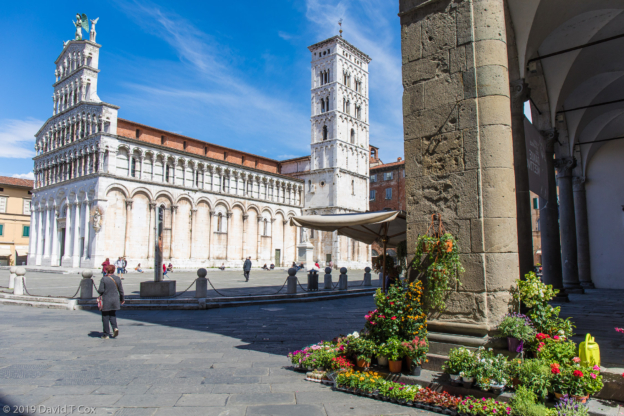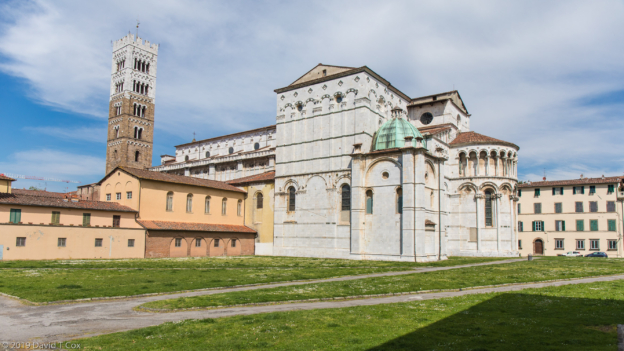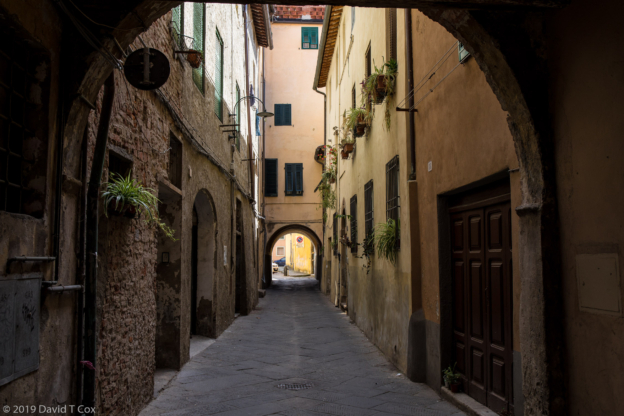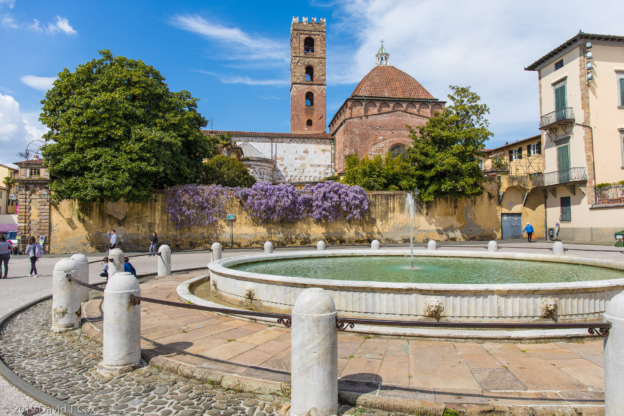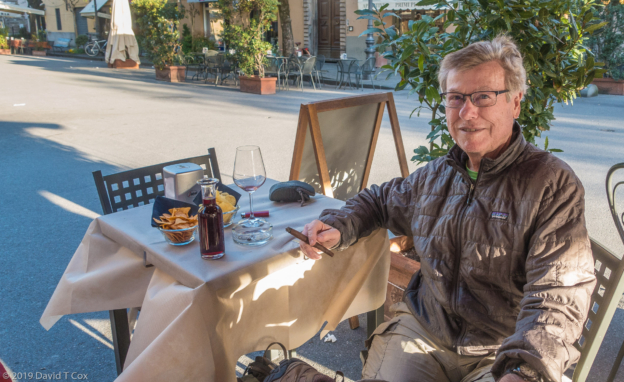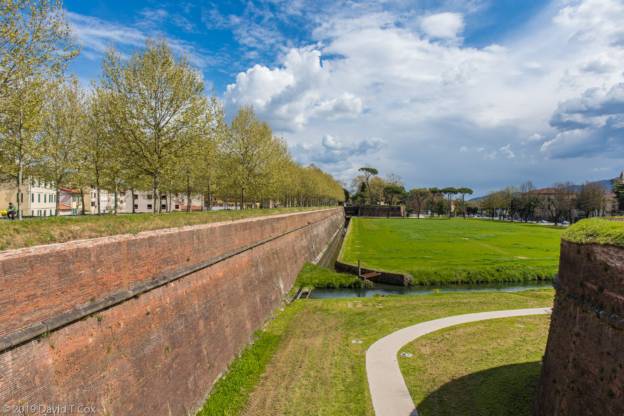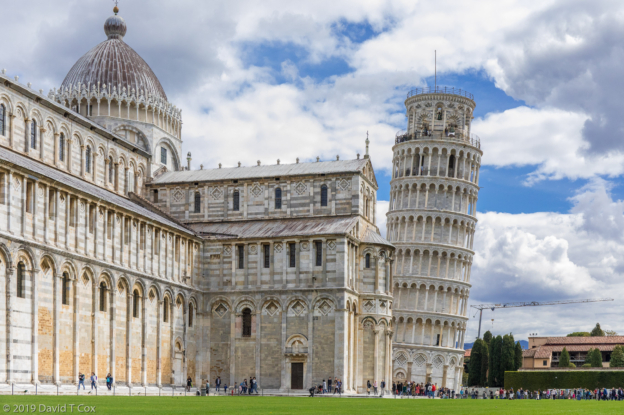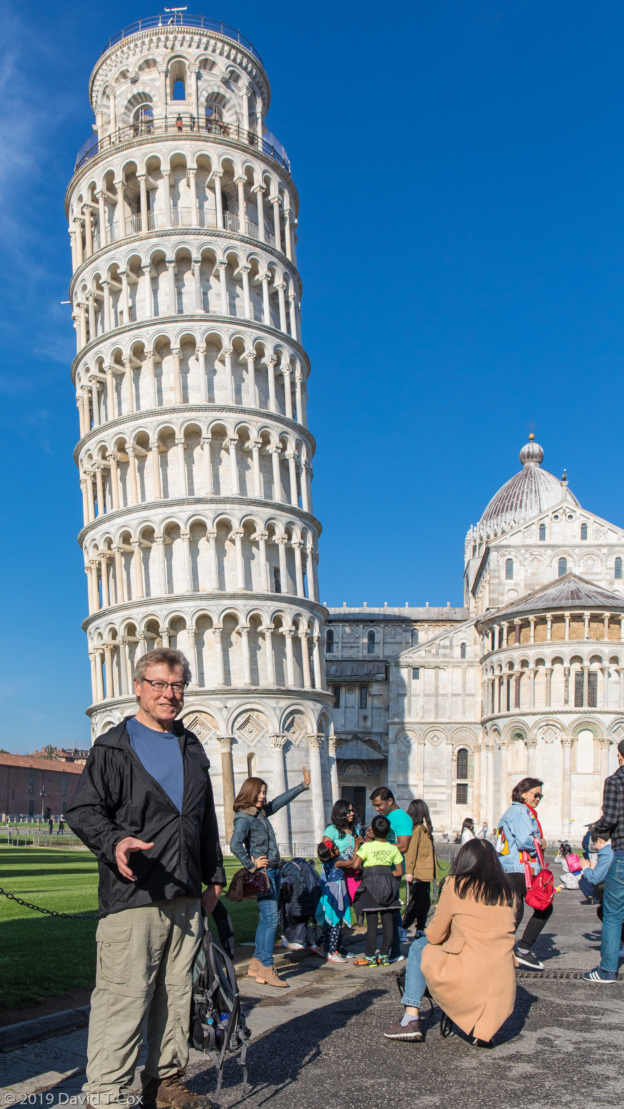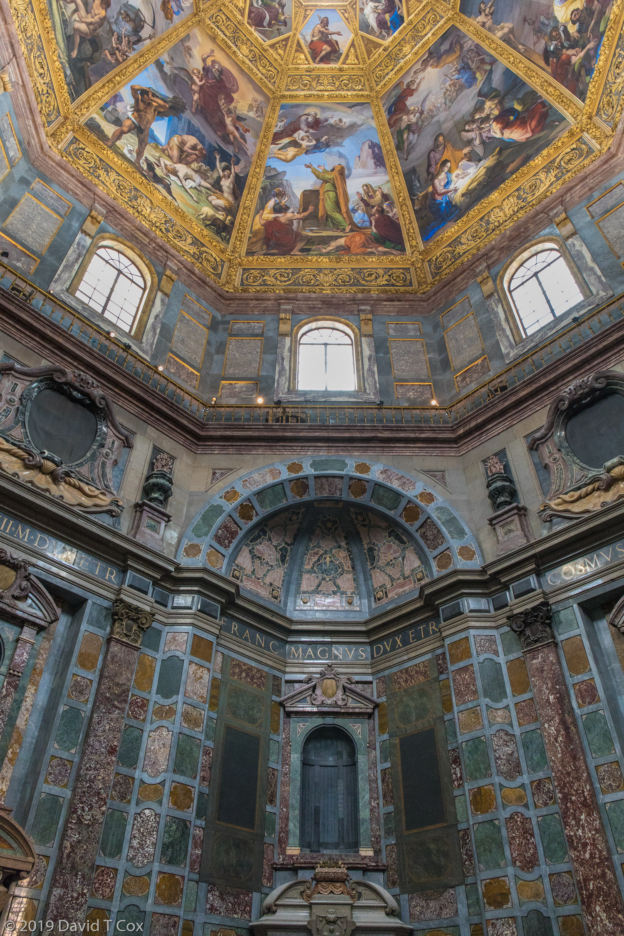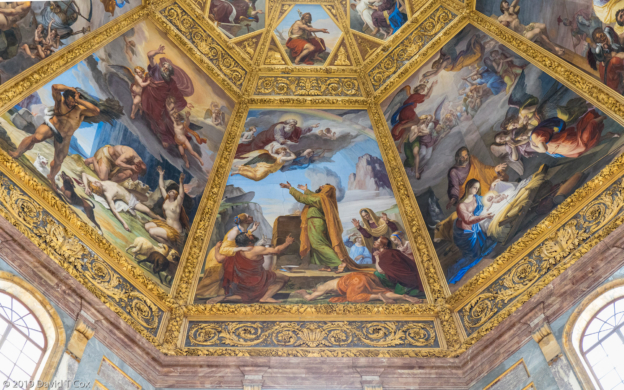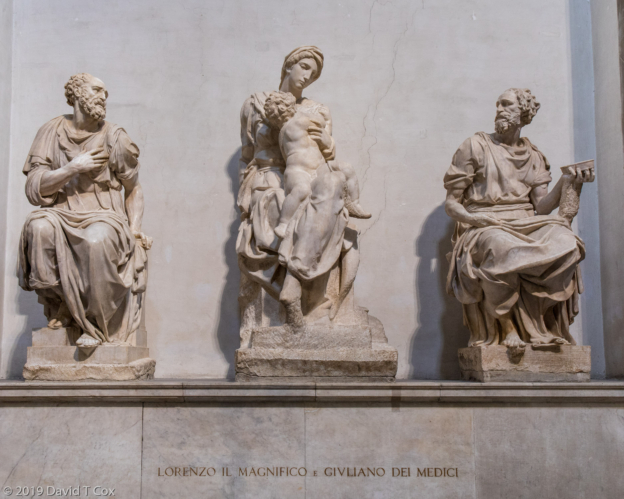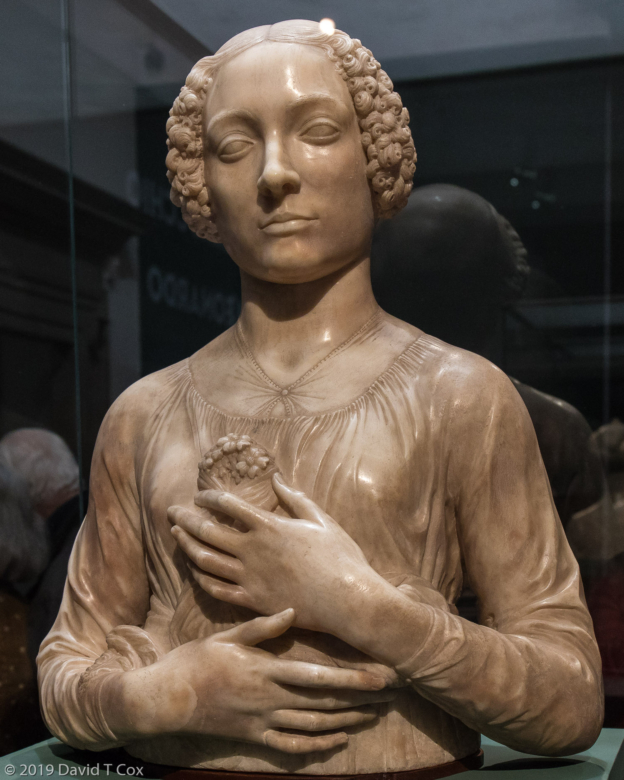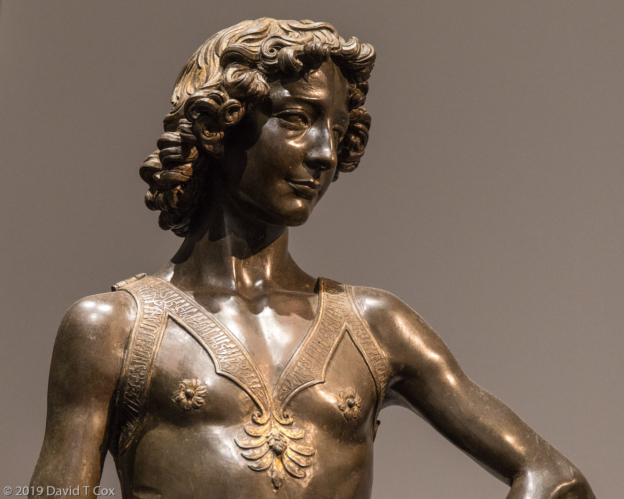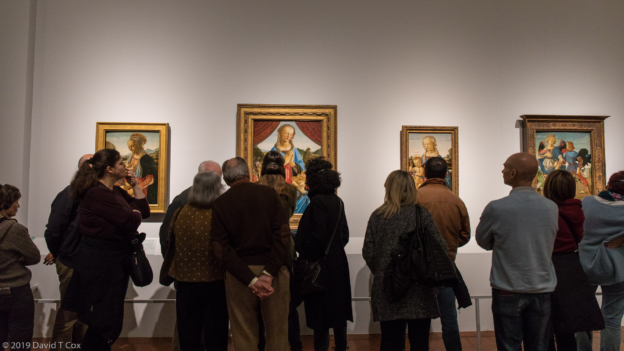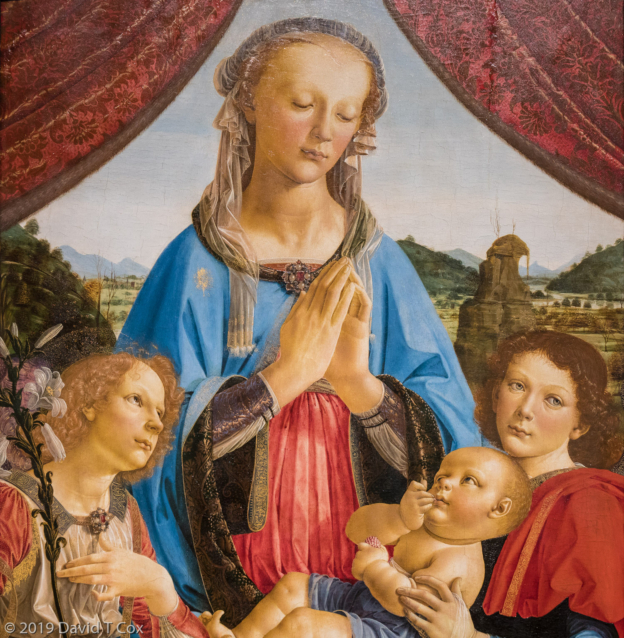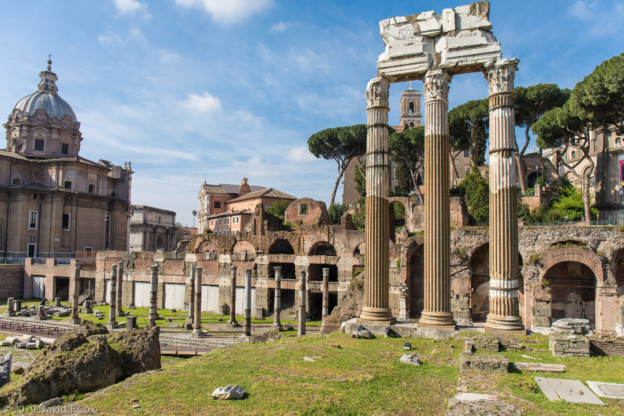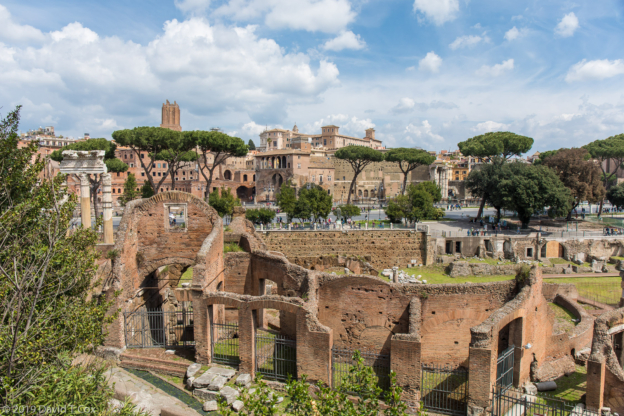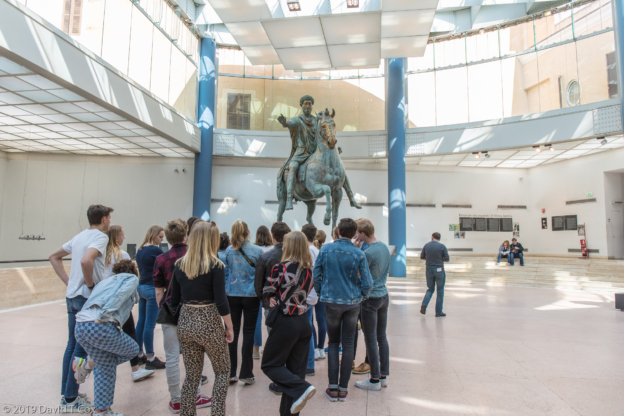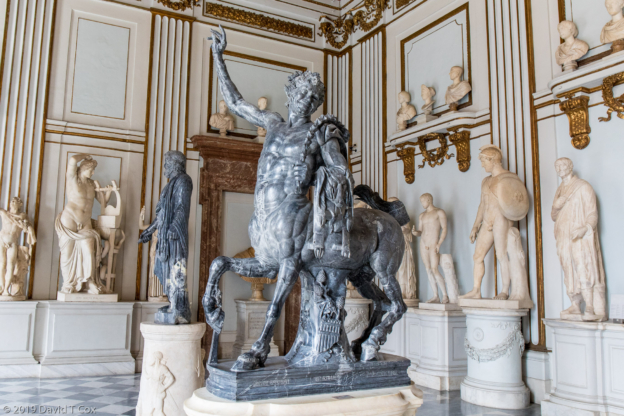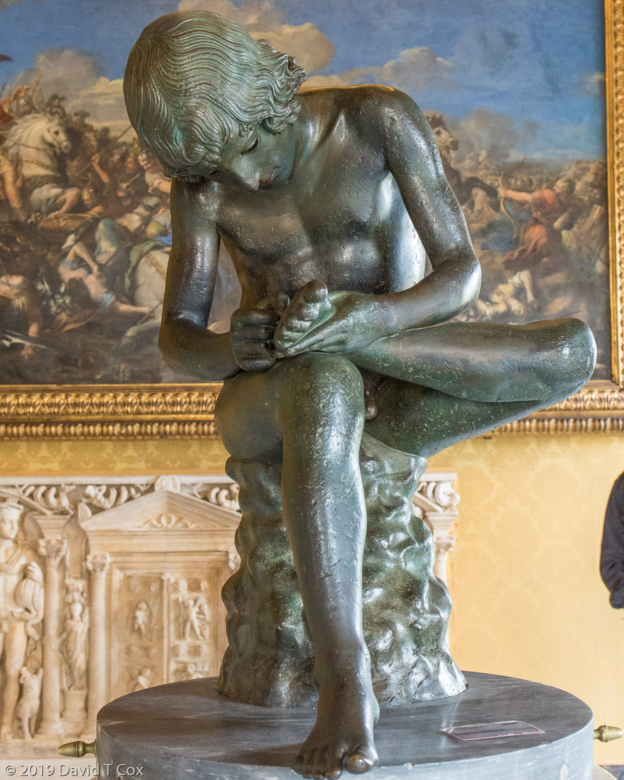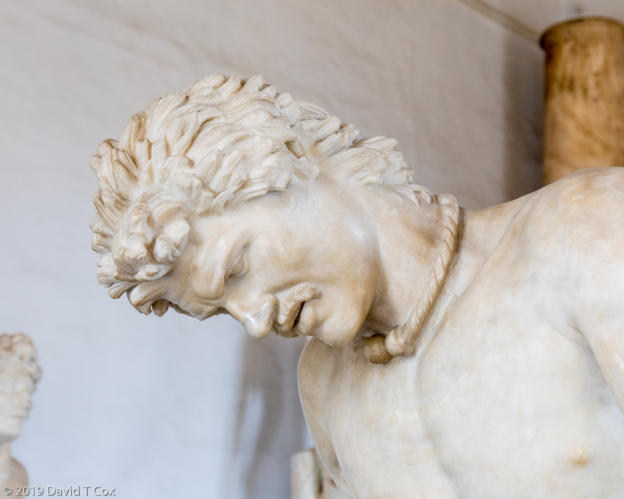All Photos Are Below the Travelogue Text
Click on Any Photo To Open Slide Show
To print the travelogue, right click anywhere on the page. Choose "Print" from your browser dialog box. You can choose Save to PDF in the browser print window.
Share your thoughts.
Email Dave - coxdavid55@hotmail.com
I last reported on Florence, to which I will again return in this segment. From Florence I took, on April 9, the regional train to Lucca, an ancient walled Tuscany town west of Florence, and famous for its complete set of 16th Century walls built to defend against the threat from the Florence Kingdom which then extended to just 15 kilometers from Lucca; the walls never saw defensive use, and now form over 4 kilometers of one of the finest raised set of gardens, overlooks and bike and walking paths completely circling the old city. The cathedral and the Basilica amaze with their white marble Romanesque and Gothic exteriors. I stayed in a lovely B&B, the Relais Lucca, just inside the walls, and spent a fair amount of time just getting mildly lost in the maze of old city alleys and streets which run at odd angles.
I took a day trip to visit the famous Cathedral and Tower of Pisa, just 25 minutes away on the wonderful local trains. Although the regional trains are not the various high-speed versions, and stop at many local stations, they still run at over 100 mph, leave and arrive on time (generally to the minute), and spend just minutes in the stations. Travel by train is faster, cheaper and more convenient than renting an auto (unless you are with a group).
The Pisa cathedral probably is the most amazing I have seen in Europe, sitting inside its own set of medieval walls, and surrounded by sumptuous and massive related marble edifices all set in manicured green expansive lawns. All the related structures seem ultimately to exist just to showcase that weird, but now expected, gorgeous white bell tower – it just does not look like it should be able to resist falling. This World Heritage Site seemed to me to have more tourists than any site I have so far visited. It is hard to exaggerate the numbers of tour groups and student groups scurrying like thousands of ants over the grounds and into and out of the various structures. And for the thousands of visitors each hour they provided one set of public toilets, with two stalls for women and two for men. These were not well maintained, had lines which tested bladder control, and required first lining up at a small ticket office to purchase the 80 cent right to use same. This certainly seemed an utterly preposterous operational miss for such an astounding site.
From Lucca I had to back-track to Florence before returning to Rome. I spent two days back in Florence to pick up a couple more visits to their unmatched wealth of artistic highlights. I visited the Medici Capellas, the domed burial crypts for the most powerful members of that wealthy Florence family dynasty. The chapels were designed by Michelangelo, and contain a number of his marble sculptures and architectural achievements. I spent 5 hours the next day visiting a one-time exhibition, presented in the Palazzo Strozzi, entitled “Verrocchio Master of Leonardo.” Here, for the first time ever, sculptures, paintings and drawings were borrowed from many of the best museums in the world to display the works of Verrocchio, one of the Renaissance great masters, who also was perhaps the greatest teacher producing in his workshop a crop of famous later masters, including Leonardo da Vinci. I understand this Exhibition will move this fall to the US for a few months.
From Florence I returned for a final two days in Rome, traveling via Tren Italo, a competing high speed train doing the entire journey at about 180 mph. My Rome hotel room this time was across Via Cavour from my last apartment; I now had a balcony facing north over the majority of the Roman Forum and the massive “Altar to the Fatherland” monument, with exceptional evening views. As in Florence, I used the time to pick up a few of the many sites previously missed. This included a day spent in the Capitoline Museums on the hill above the Roman Forum. Here one encounters most of the marble and bronze masterpieces excavated from the central part of ancient Rome. These include the heroic sized bronze of Marco Aurelio on horseback, the incredible bronze of “Spinario,”, the seated boy pulling a thorn from his foot, the marble “Capitoline Galatian,” also known as the “Dying Gaul,” the marble “Capitoline Venus” and a stupendously detailed black marble centaur, recovered from Hadrian’s Villa.
On the 17th I flew from Rome to Madrid, stayed one night near the Chamartin Station and took the train the next day to Avila, the famous World Heritage Site walled city in Castillo y Leon, to spend Easter with the nightly solemn Processions from and to the Cathedral.
Some closing observations from Italy:
The trains and buses leave on time, and almost always arrive on time, usually within one minute of schedule. And, for almost anywhere you want to go, convenient train service exists with departures throughout the day. Travel is much faster than by auto, and passes through beautiful countryside rather than along busy highways.
Tour groups are everywhere, but now something like 20% to 30% of all foreign groups are Chinese. This is something you just did not see 10 years ago. Clearly the middle-class in China has grown substantially and now seeks to explore the world. I am curious to what extent the government promotes this.
About half of all late morning tour groups, in all museums and heritage sites, are middle-school students with drag-along teachers and/or parents trying (usually in vain) to maintain order and some semblance of silence inside the buildings. As a teacher lectures about what is before the group, most of the students seem to pay little attention. I suppose some of this cultural heritage finds a way in, and actually may reappear in the future as one acquires more context.
Selfies have become a scourge of travel photography. Younger people no longer desire photos of just cathedrals or gated walls or Michelangelo marbles or da Vinci paintings or “leaning towers.” All famous landmarks and works of art become simply settings and backdrops – the photographer becomes the main subject. Most try infinitely overused poses or camera positions, and all require the subject to get as close as possible to any artwork. The new Chinese tourists seem to have a special appetite for these, or more often small group photos. Anyway, if one simply wants a photo of the edifice or work of art, it may be nearly impossible without including in the photo a constant stream of selfie subjects vying to stand in front of or as close to the famous piece as possible. This somewhat narcissistic obsession with inserting self as the main subject into photos of all manner of external wonders bothers me at a deep level. Clearly the phenomenon has emerged as part of the social media revolution. (Recent news reports make clear the obsession can become deadly when the backdrops are not man made, but include wild animals or scenic canyon overlooks).
I really like the Italian cigars made in Tuscany -Toscano Clasicos come 5 to the box at about $1.25 each – available in any tobacco shop in the country. The tobacco, now grown in Tuscany, is a Kentucky variant grown initially for pipe mixtures. The tobacco apparently is allowed to ferment, and then the cigar is made with the moist leaves. The final cigar is long, fat in the middle, and with a heavy ribbed leaf outer wrap. The cigars are dry and so do not have to be maintained in humidity. They look like a double cheroot joined at the fat end. They burn decent and long, and provide a mild smoke.
Many people have dogs they walk in the cobbled streets. In Lucca, close to half the dogs I saw were odd versions of “wiener” dogs, aka dachshunds – this included short-haired, long-haired, wire-haired, longer legged and fat dogs, including one extraordinarily long dog where the backbone strained to hold the belly off the ground. My family’s first dog in India was a dachshund of uncertain parentage, so I have always loved the breed.
Almost no one in Italy is overweight, despite the seeming occurrence in the “old towns” of ice-cream (gelato) shops almost every other block (pastry stores with sinful chocolate are in between). Families walk with ice cream dribbling from their cones, over their fingers and onto the street. An exception to this healthful body appearance, you may guess, is with the American tourists; first you notice the expansive pants – then you pass by and hear the unaccented English.
Italians apparently cannot talk if they cannot gesture and wave their arms. I have had Italians confirm this to me. It is amusing to watch a person walking down the street, phone in pocket and headset on, talking to the air in front of their face (common in the Western world) – it is more amusing to watch an Italian doing same, but with both arms waving emphatically with various gestures. Even more amusing when someone is seated at a restaurant table, phone laid flat in front with speaker phone on, and the diner is conversing with the table while the arms are flailing. I sometimes wish I was more expressive.
Goodbye Italy. Later. Dave
- Catedral San Martin, Lucca, Italy
- city street, Lucca, Italy
- Palazzo MIcheletti, Piazza Duomo, Lucca, Italy
- Torre Guinigi, Lucca, Italy
- Dave at City Bar w Toscano Classico cigar and 1/4 L house wine, Lucca, Italy
- Chiesa St MIchael in Foro, Romanesque and Gothic styles, 11th – 12th C, Lucca, Italy
- City Walls, 16th C, Lucca, Italy
- Cattedrale and Tower, Pisa Romanesque, 11th – 12th C, Pisa, Italy
- Dave at Cattedrale and Tower, Pisa Romanesque, 11th – 12th C, Pisa, Italy
- Chapel of the Princes, Cappella Medici, Florence, Italy
- dome of Chapel of the Princes, designed by Buontalenti, Cappella Medici, Florence, Italy
- Madonna and Child by MIchelangelo 1521, over sepulchre of Lorenzo the Magnificent, w St Cosmas by Angelo Montorsoli and St Damian by Raffaello MOntelupo Michelangelo Sacristy, Chapel of the Princes, Cappella Medici, Florence, Italy
- Verrocchio, Lady w Flowers, marble, ca 1475 Verrocchio Master of Leonardo Exhibition, Palazzo Strozzi, Florence, Italy
- The David, bronze, by Verrocchio, Verrocchio Master of Leonardo Exhibition, Palazzo Strozzi, Florence, Italy
- Verrocchio and da Vinci, Venus and Cupid, drawing – a study, da Vinci did reeds, Verrocchio Master of Leonardo Exhibition, Palazzo Strozzi, Florence, Italy
- Verrocchio, Madonna room, Verrocchio Master of Leonardo Exhibition, Palazzo Strozzi, Florence, Italy
- Verrocchio, the Volterra Madonna w Child, painting, 1471-72, hangs in London, shows Lippi’s influence, one of his greatest paintings, Verrocchio Master of Leonardo Exhibition, Palazzo Strozzi, Florence, Italy
- night view from my balcony, Rm 404 H Romano, Rome, Italy
- Roman Forum, Rome, Italy
- Roman Forum, Rome, Italy
- Marco Aurelio bronze on horse, ca 176 – 180 ad, Capitoline Museum, Rome, Italy
- Centaurs, black marble, signed by Aristeas and Papias, from Hadrian’s Villa, Great Hall Roman sculptures, Capitoline Museum, Rome, Italy
- “Spinario” Boy Pulling Thorn from Foot, Roman bronze, 1st C BC,, Capitoline Museum, Rome, Italy
- Capitoline Galatian, aka Dying Gaul, marble, copy of monument erected by Attalus I, King of Pergamon after battle w Gauls, Capitoline Museum, Rome, Italy
To print the travelogue, right click anywhere on the page. Choose "Print" from your browser dialog box. You can choose Save to PDF in the browser print window.
Share your thoughts.
Email Dave - coxdavid55@hotmail.com
